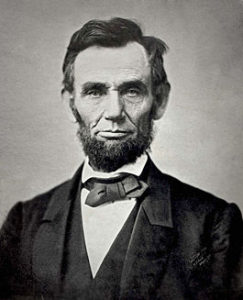TBT: TRB – The National Academy of Sciences
06.05.2014 | HMMH |I’m at the Transportation Research Board (TRB)’s Keck Center in DC for several Aviation Group mid-year meetings this week. Here’s a bit of The National Academy history (lifted directly from the NAS website):
The National Academy of Sciences was founded on March 3, 1863, at the height of the Civil War.
The immediate roots of the NAS can be traced back to the early 1850s and a group of scientists based largely in Cambridge, Massachusetts. The group enlisted the support of Massachusetts Senator Henry Wilson, who helped draft a bill for the incorporation of the National Academy of Sciences. Wilson brought the bill to the Senate on February 20, 1863, where it was passed on March 3. It was passed by the House of Representatives later that day, and was signed into law by President Lincoln before the day was over. The National Academy of Sciences had officially come into being with 50 charter members, who over the years would be joined by the election of the nation’s most distinguished scientists.
[T]he Academy shall, whenever called upon by any department of the Government, investigate, examine, experiment, and report upon any subject of science or art, the actual expense of such investigations, examinations, experiments, and reports to be paid from appropriations which may be made for the purpose, but the Academy shall receive no compensation whatever for any services to the Government of the United States.
—An Act to Incorporate the National Academy of Sciences, [4]
Over the years, the National Academy of Sciences has broadened its services to the government. During World War I it became apparent that the limited membership—then numbering only about 150—could not keep up with the volume of requests for advice regarding military preparedness. In 1916 the Academy established the National Research Council (NRC) at the request of President Wilson to recruit specialists from the larger scientific and technological communities to participate in the Academy’s advisory work to the government. Recognizing the value of scientific advice to the nation in times of peace as well as war, Wilson issued an executive order at the close of World War I asking the Academy to perpetuate the National Research Council. Subsequent executive orders, by President Eisenhower in 1956 and President Bush in 1993, have affirmed the importance of the National Research Council and further broadened its charter.
TRB is a division of NRC. I’m guessing Lincoln never could have imagined some of the discussions that go on in this building, but it somehow seems noble to be carrying out his vision.






